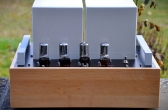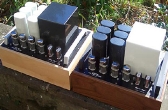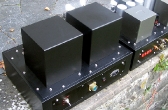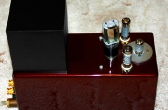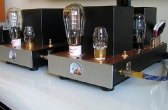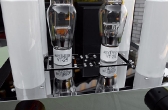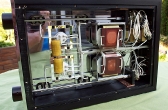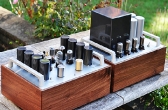Welcome to Cubes for Tubes Support
In this section we gather questions and ideas that are too specific to discuss them on the products page. For a quick overview you might visit our frequently asked questions page first. If you have a question, send us an email to or go to the contact page. We will reply as soon as possible.
Choosing the right transformer cover
Dimensions of the transformer covers are based on the common core sizes M55 to M102. Mains and output transformers for tube amps, however, might not always fit these standards. Check the dimensions of your transformer first, before purchasing a cover. Ask the manufacturer or dealer for the exact dimensions if you haven’t ordered the transformer yet. For mains and output transformers with molded cables an isolation distance of a few millimeters is sufficient. For transformers with solder tails you should either isolate the contacts or choose a cover that provides an isolation distance of at least 5 mm to each side. Which transformer cover do you need? A 80 mm transformer cover has a base that is 80 mm deep by 80 mm wide. The 100 mm transformer cover measures 100 mm by 100 mm etc. You can calculate the inside dimensions by subtracting 5 mm from each side. See the product descriptions for further information. You can quickly convert mm to inches by using our online calculator. It converts mm to inches or vice versa. Please note that you have to use a deicmal point. A decimal comma will be ignored.
Recommended spacing between contacts and transformer cover
How much spacing is needed between high voltage contacts and the transformer cover? For safety reasons we calculated clearance values for the overvoltage category III and a pollution level II. For more detailed information we recommend this article. For transformers with insulated flexible leads less spacing is needed.
| 150 volts | 300 volts | 600 volts | 1000 volts | 1200 volts | |||||
|---|---|---|---|---|---|---|---|---|---|
| 1.5 mm / 0.06″ | 3.0 mm / 0.12″ | 5.5 mm / 0.22″ | 8.0 mm / 0.31″ | 10.0 mm / 0.39″ | |||||
| Data calculated for AC voltages, an overvoltage category III and a pollution level II | |||||||||
Moulding the transformer in epoxy resin
Sometimes you might prefer moulding the transformer in epoxy resin. Moulding can reduce noise induced by mechanical vibration. You don’t need threaded rods, since the transformer covers provide threaded holes for mounting on the enclosure. Note that after moulding the transformer it can not longer be separated from the cover. Epoxy resin in small quantities is usually very expensive. Feel free to contact us if you need it. We can provide high-quality expoxy resin at reasonable prices.
Mounting the transformer cover
To prevent the transformer cover from getting damaged mounting the cover should be the last step in your workflow. It is crucial that you drill the mounting holes accurately! The distance of the threaded holes to the outer edges of the cover is less than 1 mm. Therefore, we recommend a hole size of 3.2 mm to 3.5 mm. To drill the holes as accurately as possible, you may use the supplied drilling templates made of transparent film. Fix the template on the case with a little tape. It is best to use a center punch to center the holes exactly on the crosshairs. Do not forget to underpin the enclosure with some wood to prevent it from bending. Strike carefully with a hammer and check the correct position. Then deepen the center. With a little care, an accuracy of 0.2 mm is possible. The transformer covers are supplied with screws M3x8. This is usually sufficient for a sheet thickness of up to 3 mm. If you need longer screws, ask us. You can also use screws from your local hardware store. The maximum usable depth of the threaded holes is 6 mm.
Painting the transformer cover
A matte black finish is nice, but the proud owner of a DIY tube amp might have something more special in mind. Usually, we do not offer custom paint jobs, because the costs are too high. Perhaps you know an auto painter, who can do that for you. The paint should then, however, not heated in the spray booth to avoid problems with the original coating. Better air-dry the new paint. Why not DIY paint your covers! With practice, you will get excellent results with aerosol lacquer. Don’t use cheap spray cans. The results are often poor, and they contain less color pigments. Wet-sand the cover with 400-600 grade paper. Clean and dry the cover and remove remaining dust. Best suited for this are dry and pre-saturated wipes for surface cleaning prior to painting. Your hardware store will probably don’t offer these wipes. Better visit a specialist shop for car components or your garage. Note that single-component paint needs much more time for through drying. Handle the transformer very carefully!


